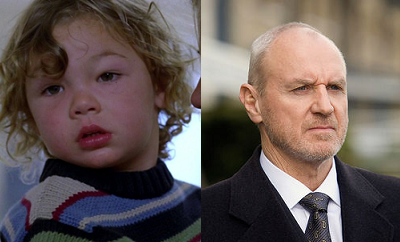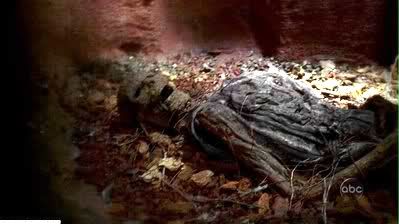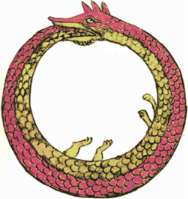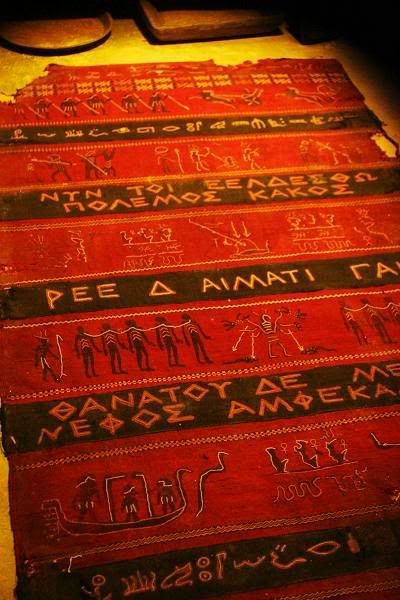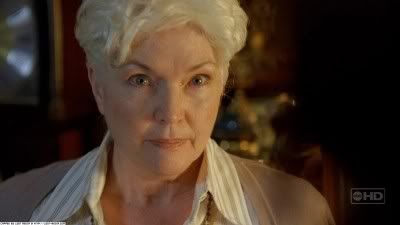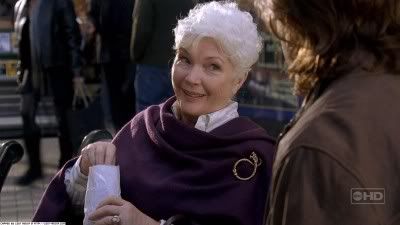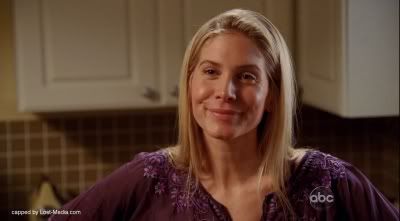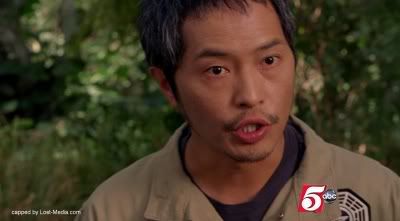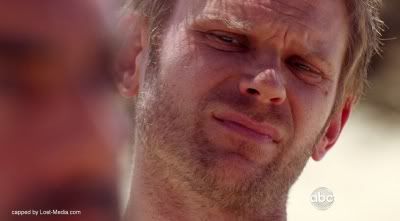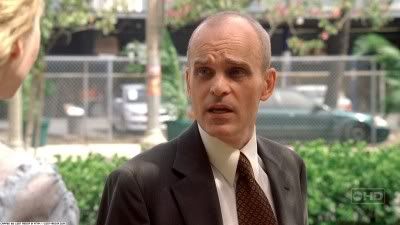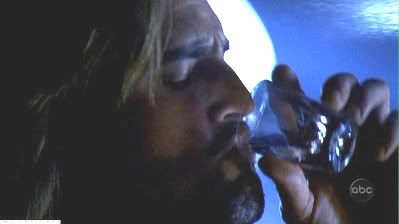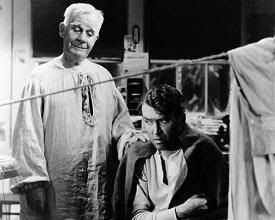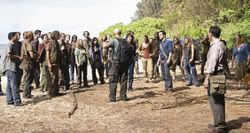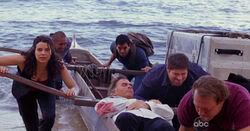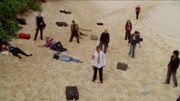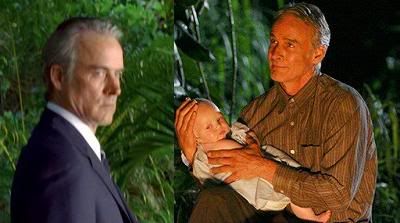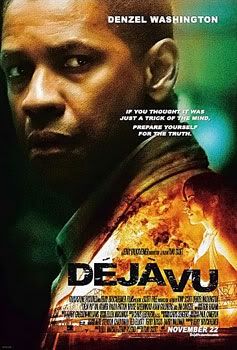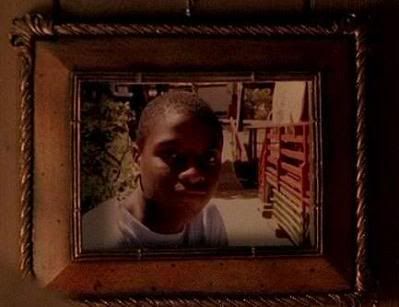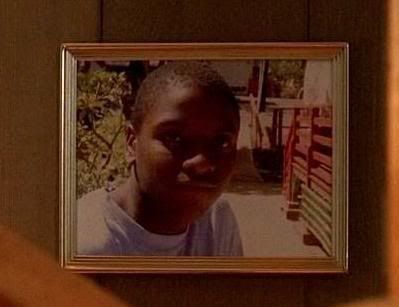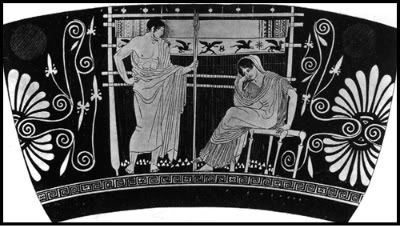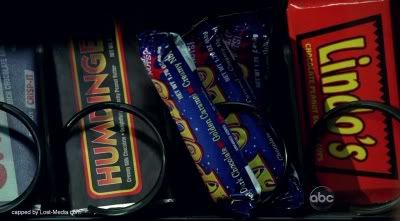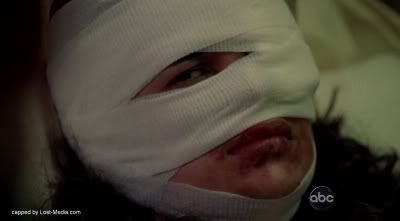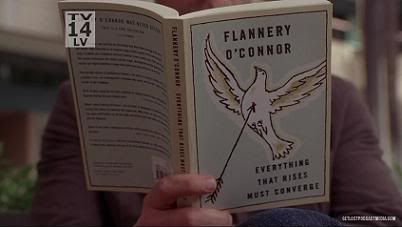We've been talking a lot about time travel. So I thought you all everybody might enjoy these scientific and pop cultural tidbits I've stumbled across recently in my research.
Over on Slate.com, there's a
fascinating article by a physicist named Dave Goldberg articulating four "rules" for time travel in fiction. I agree with his general premise that, to be plausible, time travel stories should comport with the theoretical limits of physics. But some of his rules -- e.g., no parallel universes or alternate realities -- seem to go beyond that criterion. I'm actually e-mailing Dave, who's a friend of a friend, so maybe he can set me straight!
Speaking of the multiverse, I caught a bit of the time travel flick
Deja Vu again the other night. The film itself is merely decent, but has a very clever premise involving three branching timelines, only two of which we actually witness. (If you've seen the film, check out the
imdb faq for a nice explanation.) What really struck me was the familiar debate therein about whether it's possible to change the past. There's Denny, the voice of Whatever Happened, Happened:
Denny: Anything you're gonna do, you already did. Whether you send a note back, or don't send a note back...it doesn't matter. You can't change the past, it's physically impossible.
And then there's Shanti, proponent of what I've been calling the Tangent Timeline possibility:
Shanti: That's not necessarily true. Branching Universe Theory holds you can do...
Denny: Ohhh... Branching... Universe... Theory... ohhh, no no no.
Shanti: Alright, I'll show you. The traditional view of time is linear, like a river, flowing from the past towards the future.
Doug Carlin: But you can change the course of a river, right?
Shanti: Exactly. Introduce a significant enough event at any point in this river and you create a new branch, still flowing toward the future, but along a different route. Changed.
Denny: Yeah, but that river is the Mississippi and we're lobbing what amounts to a pebble into it. That's a very few tiny ripples in a kind of big body of water, don't you think?
Shanti: Traditionalist.
Pryzwarra: Say we do create this new branch. What happens to the old one, to this one?
Denny: [referring to Shanti] ... Ask the radical!
Shanti: Well, it might continue parallel to the new branch. Most likely, it ceases to exist.
Notice how they use the same general analogy as Faraday of throwing stones into a river. Notice as well how they specifically cite the Mississippi to make their point. As I mentioned in the comments to
WHH+CC=??, there's an interesting parallel between manipulation of the LOST timeline and human efforts to control the flow of the Mississippi using artificial levees. Nature keeps trying to "correct" our intervention by shifting the river to a different course.
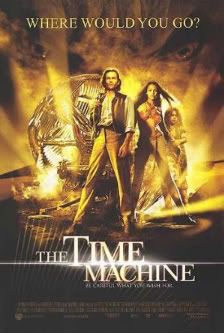
Finally, on the subject of course correction, I stumbled across an interesting tidbit from the
2002 film adaptation of H.G. Wells's classic, the Time Machine. In the film, the protagonist is driven to invent a time machine by the murder of his fiancee during a mugging. Through time travel, he's able to prevent the fatal mugging, but his wife still dies in a carriage accident. The timeline, in other words, is mutable but self-healing. The parallel to Ms. Hawking's speech re course correction is striking:
MS. HAWKING: Because it wouldn't matter. Had I warned him about the scaffolding tomorrow he'd be hit by a taxi. If I warned him about the taxi, he'd fall in the shower and break his neck. The universe, unfortunately, has a way of course correcting. That man was supposed to die. That was his path just as it's your path to go to the island. You don't do it because you choose to, Desmond. You do it because you're supposed to.
Obviously, Deja Vu's analogy of throwing stones in a river is hardly a revolutionary metaphor for changing the future. And the Time Machine isn't the only time travel narrative to feature a self-correcting timeline -- I've also mentioned the example of Fritz Leiber's sci-fi classic, the Big Time. Still, the similarities are strong enough that I have to wonder if the parallels are really intentional references by the writers.
UPDATE: THE PHYSICIST RESPONDS
As I mentioned, I've been e-mailing Dave Goldberg, the author of the Slate piece, and I'm pleased to report he's replied! Here's the e-mail I sent Dave critiquing his piece:
I read your Slate piece with great interest but also some confusion. I agree with your general premise that, to be plausible, time travel stories should comport with the theoretical limits of physics. Still, I can't help thinking some of your rules go beyond that criterion. If you have some time, maybe you can set me straight?
Your first rule is no parallel universes. This is where I have the most questions, but before we get to the science, one minor pop cultural quibble. Is it really accurate to describe Back to the Future as illustrating the "many worlds" approach? I think of it as an example of the grandfather paradox because Marty nearly succeeds in erasing himself from the timeline. Seems to me that can only happen if there's one mutable timeline, rather than many running in parallel.
OK, onto the science. Your rationale is that that GR predicts only one universe. But is it really fair to limit plausibility to what GR says? My understanding is that many time travel solutions (e.g., Thorne's traversible wormholes) are semi-classical. They exploit the tension between GR and QM (e.g., by positing matter with negative energy density) which is why Thorne himself thinks a theory of quantum gravity will probably make wormhole travel impossible.
In fact, doesn't resolution of Polchinski's paradox require use of Feynman's "sum over histories" approach? I realize that's not synonymous with Everett's "many worlds" interpretation of QM. To this layperson's eye, however, they look pretty similar. (Or does "sum over histories" still imply only one universe because all others cancel themselves out?) Regardless, it seems kind of arbitrary to exclude a valid interpretation of QM like "many worlds" from time travel fiction.
I actually agree with your second rule, but have questions concerning three and four, where you talk about Novikov's self-consistency principle and free will. Correct me if I'm wrong, but isn't self-consistency merely a conjecture? As I understand it, Novikov showed there's always at least one self-consistent trajectory through spacetime, but simply assumes that nature will enforce it. Is there some further proof of the latter point?
Relatedly, you suggest that Polchinski's paradox shows we have no free will where changing the future is concerned. But I thought the billiard ball hypo was meant to bracket questions of free will, not resolve them. I'm comfortable philosophically with the compatibility of free will and determinism. But I'm skeptical of Novikov's analogy to the way physical forces constrain us. Isn't there a difference between an identifiable force like gravity and some mysterious "hand of God" that stops a time traveler from killing Hitler?
And here is Dave's thoughtful and illuminating reply:
1. BTTF. They are _very_ inconsistent about how they treat time travel in that franchise. The model Doc Brown makes clear in BTTF2 has timelines diverging from one another. He even draws a diagram on a chalkboard showing two timelines with a common origin. This is very consistent with the parallel worlds model. What's more if we ignore the (terrible) detail of Marty disappearing in BTTF1 (which can't be justified under any circumstances), it's also clear that they use a parallel universe model. If not for that, then who prevented Marty's parents from falling in love? It's a stretch, perhaps, but because it's the most famous of the genre, I had to do my best interpretation. Since I'm discounting the model, I figure some liberties could be taken with whether BTTF follows it exactly.
2. 1 Universe/Many in GR. I was contrasting what GR says to "parallel universes." Here we get into a bit of terminology, since you may have heard of something called the "multiverse" or somesuch which contains many "universes" (small u). In standard inflationary cosmology, the Universe (big U) can, indeed, split into many (perhaps infinitely many) bubble universes (small u). But these universes (small u) have nothing to do with Everett's many worlds. They may, in fact, have significantly different physical constants, matter concentrations, sizes, fates, etc. More importantly, we only refer to them as separate universes (small u), because there is no physical way to travel from one to the other. They are, however, separated from us in an entirely spacelike way (not, e.g., in separate "dimensions" or any such nonsense).
3. Polchinski/Sum over Histories. Sort of. Feynman's path integral approach, many worlds, the copenhagen interpretation. All of them predict the exact same thing. They're just different ways of writing down the integrals. Mathematically, they all come out the same. Most physicists prefer the Copenhagen interpretation, but I should point out that even advocates of the "many worlds interpretation" don't actually believe that we can visit those other worlds. In each case, all we're doing is figuring out a transition probability. What is the probability that the ball gets blocked? A: 0.
4. Self-consistency. Self-consistency is at the center of both GR and QM. Note that this isn't the same as causality. However, both theories are (at their heart) a set of differential equations which combine source terms (mass, pressure, electromagnetic fields) on one side, and a result (curvature of space-time, evolution of wavefunctions) on the other. It's a conjecture, but only in the sense that we conjecture that (within their appropriate regimes) QM & GR are correct. While it's true that we don't have a theory of quantum gravity, it would be hard to imagine that self-consistency wouldn't be enforced. Besides, my central tenet was to describe physics as we currently understand it. Saying, "perhaps a new theory will make this all wrong," is a bad approach.
5. Free Will/Determinism. True, it's a bracket. But a very important one. If you accept the single timeline model (which is justified by the rest of the discussion) then the determinism falls into place. What stops you from killing Hitler (I call Godwin's Law!)? It's more of a question of "what stopped you?" since it already happened. I don't think it likely that your gun just jams or you're unable to pull the trigger. More likely, you probably wouldn't end up with a gun pointed at Hitler in the first place. (Note: An analogy follows. Don't take it literally). I like to think of it like this. Suppose you were God, and you wrote a time travel narrative like this:
1935 - You invent time travel
1939 - Future you jumps out of the time machine and kills Hitler.
1939-1945 WWII
1945 - You get in your time machine with a machine gun.
Clearly, this timeline makes no sense (as WWII wouldn't have happened, and further, not knowing about how evil Hitler is negates your need to kill him), so it gets "revised." This is what I mean when I say it's an analogy. There's no meta-time, so the "revisions" are really just new attempts to make a self-consistent history.
Attempt#2
1935 - You invent time travel.
1939 - Future you jumps out of the time machine but can't kill Hitler for some reason.
1939-1945 WWII
1945 - You get in your machine with a machine gun.
Better, but still flawed because of step 2. What stops you?
Attempt#3
1935 - You invent time travel
1939 - Unbeknownst to (future) you, the exit ramp of your time machine gets locked in a room.
1939 - Future you jumps out of the time machine and are trapped in a room.
1939-1945 WWII
1945 - You get in your time machine with a machine gun.
We could go further, trying to make the history ever more plausible. Indeed, one way of thing about QM is that the most plausible scenario is the one most likely to have actually occurred.
You can read more of Dave Goldberg's thoughts on the physics of time travel and related subjects at the website for his forthcoming book A User's Guide to the Universe.
